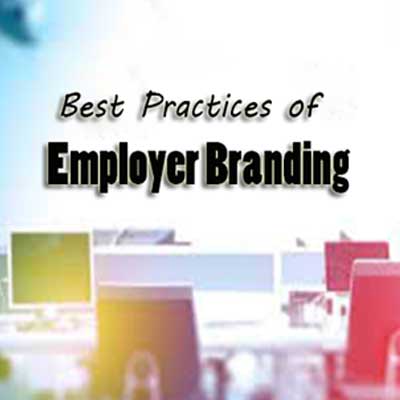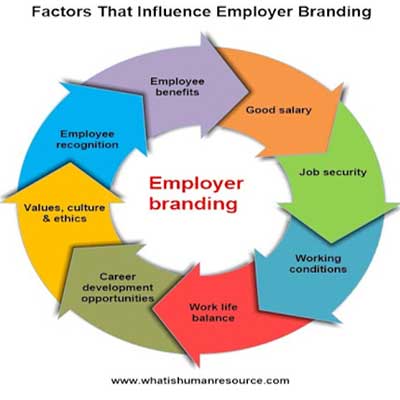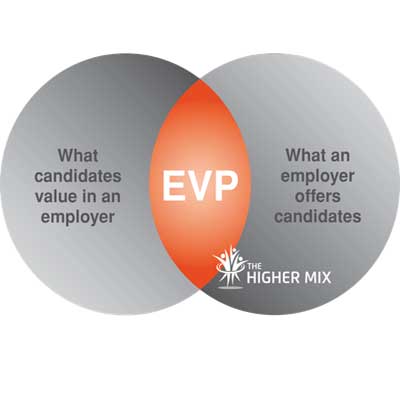Best Practices for Employer Branding | Aparna Sharma | Senior HR Professional & Certified Corporate Director I Editor’s Collection

Today, a strong employer brand is seen as a critical way to attract, engage, and retain the best people.
And it is also extremely important in challenging times like the COVID-19 pandemic, when your (potential) candidates expect clear communication of your values and how you treat your employees.
Employer brand can be a crucial differentiator when attracting, hiring, and retaining new employees and has a long-lasting impact on your talent acquisition efforts. In fact, 94% of candidates are more likely to apply for a position listed by a company that actively manages its employer brand. And, the stronger your branding, the better, as powerful branding leads to 50% more qualified applicants. That’s why your employer branding strategy needs to be on point.
However, you shouldn’t just be focused on pulling key talent into your company—you need to have an equal focus on retaining the essential talent already within the four walls of your business.
In the changing conditions on the labor market due to COVID-19, your employer brand must be on point to positively impact how your future and current employees, as well as the public, perceive you.

1. Get a clear VISION of your organization’s purpose
The first important question you have to ask yourself is: what does your company stand for, and what is its mission?
Discovering your company’s values will become the foundation that your employer brand is built on. As a company, you need to clearly communicate to your customers and employees what you believe in, what you care for, and what you want to achieve. Once this vision is developed, it’ll be easier to base branding messages around it on your website and social media.
A perfect example of a clear vision is that of TED Talks :
The vision starts off by explaining that TED (which stands for Technology Education and Design), by explaining its mission to “spread ideas” online. The vision is then explained by hoping to use ideas to change attitudes, lives, and the world. This clear, succinct vision is the perfect base for the TED Talks team to base their employer branding off.
Throughout the COVID-19 pandemic, your core values and your mission should be the base of your communication. Even if you’re not hiring at the moment, bear in mind that how and what you communicate now will reflect on you as an employer in the future. Staying true to your values, communicating with empathy and being transparent are the best ways to continue building your employer brand even in times of a crisis.
2. Have a great CAREER page
Two-thirds of job seekers visit a company’s career page after learning about a job opening, so your branding needs to make an impact on it.
With the average career page converting at around 18%, the quality of your career page can have a direct impact on how many potential hires are applying for jobs. There are some core parts of any career page that take it from just another web page to a successful career page: it needs to be well designed, user friendly, and information needs to be easy to find.
A career page is also the perfect page for your company to show off your branding and tell potential hires what it’s like to work for you. It’s a balancing act; be mindful about not talking too much about your company. Instead, focus on the people who are thinking about applying for a job, and talk to them 1:1. Show them what a day-in-the-life of their job role will look like, what values your company holds, and how your culture will enrich their lives.
3. Put your EVP to life

Your employer branding should be an outward reflection of your Employee Value Proposition (EVP).
Ask yourself, what’s unique about your company’s EVP that you can showcase in your employer branding?
First, you need to understand the difference between the two. Your employee value proposition has existed since your company hired their first employee – it is what the organization offers to employees in return for their work and the value they bring to the company. Your employer brand is an extension of this; it is how you market your EVP to potential employees and show the uniqueness of your organization.
The only way you can merge your employer branding and your EVP is to be clear about and coherent in what your brand’s values are, and what your company is delivering. Blending your employer branding with your EVP allows you to maintain consistent messaging for your company, as well as to communicate to the outside world all the best bits of your brand.
4. Let your Company CULTURE shine through your employer brand
Your company culture must be a central part of your employer branding.
If you haven’t established clear company culture, don’t bother starting on your employer brand—sort out the culture first. What does your organization stand for? How do your employees perceive the culture? If you’re not sure, simply ask them what they do and do not like about the culture within your organization.
Your company culture—as well as your Employer Brand—is reflected in everything; from the way employees behave and dress to the setup of your office and the words used in marketing material. This is why it’s so important to know your culture inside out.
No culture is perfect, that’s why you don’t need to present it as such in your employer branding communication. Rather, let your potential candidates know what you’re doing to transform your culture and change it for the better.
5. Provide Valuable Content
Content provides the most powerful tool to communicate who your company is and what it stands for.
One way you can mould content into your employer branding strategy is to harness the power of employee testimonials, give information on how your recruitment process works, and even give employees an opportunity to create content themselves.
Providing accurate information to job seekers also helps build trust in your brand. For example, if you’re hiring during COVID-19, give candidates updated information on what your application and recruitment process is like.
Employee-generated content is another way of showcasing your employer brand. By engaging your current employees and making them a part of your employer branding strategy, they can become champions of your brand. After all, the launch of a new initiative or a story of what it’s really like to work at the company will be better received if they’re telling the story—not you.
Did you know that candidates trust employees 3x more than an employer themselves to give accurate information about the company?
6. Pay attention to Employer Reviews
Before a customer makes a decision to buy a product from you or a candidate applies for an open position, there’s a good chance they’ve already researched your company.
A credible survey found 76% of professionals will do some form of research into a company before they even apply for a position. And 83% of job seekers will decide whether to apply for a position based on the reviews of a company.
If your online branding and reviews aren’t painting a good picture of your brand, it’ll hurt you with the quality of your applications. When it comes to reviews, you need to react to them, consider what they indicate and if there are any underlying issues you need to address.
The best way to make reviews a driving force for your employer branding is to be proactive in getting reviews from your employees and candidates. The more positive reviews your company has online, the better it will reflect on your brand.
7. Employ Diverse Channels to show your brand
Getting creative is key to building your employer branding.
In today’s modern world, this requires going beyond “traditional” branding techniques like a website (which is of course, crucial). Now, it pays to be diverse with your branding.
Companies are turning to tools like social media, blogs, and even podcasts to tell their story. The most important part of diversifying your branding is to remain consistent with your messages and what you’re saying. Otherwise, you risk confusing your applicants.
You can start with building a presence on channels like Youtube or Instagram—places where your applicants are likely to hang out in life—which can help add zest to your brand. Tools like LinkedIn are also crucial to target professional audiences.
The best part about diversifying your channels is you can use the same message with a couple of tweaks across all of them to save time. Share your positive reviews, product updates, and personal stories from your employees across your channels to show what your company is all about, and what it’s working towards.
8. Make your Recruitment process reflect your employer brand
It’s important your recruitment process is a direct reflection of your employer branding. After all, it’s the first taste a new applicant has of your business.
Here’s where some companies fall down. They may be an innovative company but they have a recruitment process that doesn’t show it. Whether their application form looks like it was designed in 2005, or even worse, an employee sends their CV to a Gmail address, the early signals can send a bad message to potential new hires.
A large part of this is making sure applicants actually receive a reply to their application. If your company is presenting itself as dynamic and then taking 2 weeks to reply to applicants, there’s a chance they’ll no longer be interested in working for you. After all, your employer branding is not being reflected in your recruitment process.
This step applies to every step of the recruitment process, from the job advert to the interviews and from all email or telephone communications to the candidate assessments.
A particular part of the recruitment process I’d like to highlight here is the candidate assessment. If you test your applicants’ cognitive ability, personality, and skills in one go, chances are you can automate the process using software to save time. The good thing about candidate selection software is that they can be customized to reflect your employer brand.
An online candidate assessment can give job seekers a peek behind the curtain of what life is really like at your company.
Once candidates have been through the online assessment, they’ve experienced how it is to work at your company, they’ve seen their future colleagues and tasted the culture. In other words: they know what to expect (and what not to).
9. Learn from the Best-in-class
The best way to build your employer branding? Learning from the best, of course!
There is a reason some companies thrive, and some companies struggle to survive. Companies with the best employer branding often have strong, consistent messaging from staff and customers, which is communicated through a bunch of different channels. The easiest way to learn from the best is to check out businesses in the same industry as yours and check out what they do well, and what they don’t. Then, broaden your search and look at different sectors.
Take note of everything and then apply these learnings to your own brand.
Here an example -Let’s take a look at how one of the world’s most successful companies, Salesforce, navigates employer branding. The company built its branding around #Salesforce Ohana, which is the Hawaiian word for “family.” Salesforce employees, along with users, are encouraged to share anything from their desk setups to photos of their family and friends and use the #.
Then, like one big happy family, employees, and users from around the globe can interact with the user-generated content, which helps to create a sense of community.
This single # has empowered Salesforce’s staff, along with their most loyal customers, to become its loudest brand ambassadors on Instagram.
10. Set Goals and Track your Efforts

Before you start investing time, effort, and money into building your employer brand, you need to know what you want to accomplish. Do you want more people to recognize you as an attractive employer? Are you hoping to get more qualified candidates to apply for your jobs?
Setting realistic and measurable objectives is a good start to track your employer branding effort.
Next, you want to know what results you’re achieving. Select a few employer branding metrics to measure how you’re doing. This will help you understand whether your employer branding activities work, which of your campaigns perform best and also, what you can improve and optimize.
For example, by measuring candidate quality, you can see if you’re attracting the kind of candidates you’re hoping to bring in. Tracking brand awareness allows you to understand how many people know you as an employer, and how well.
Even though employer branding isn’t an exact science, tracking your efforts through measurable goals will help you achieve better results because you will know exactly what to focus on.
Wrapping up
Creating a strong employer brand makes attracting great candidates easier, helps decrease cost per hire and encourages your employees to become a force within the company. However, it is a continuous process that needs attention not only before a specific recruitment campaign but throughout the year. You need dedication and a good strategy to build and maintain a successful employer brand.


